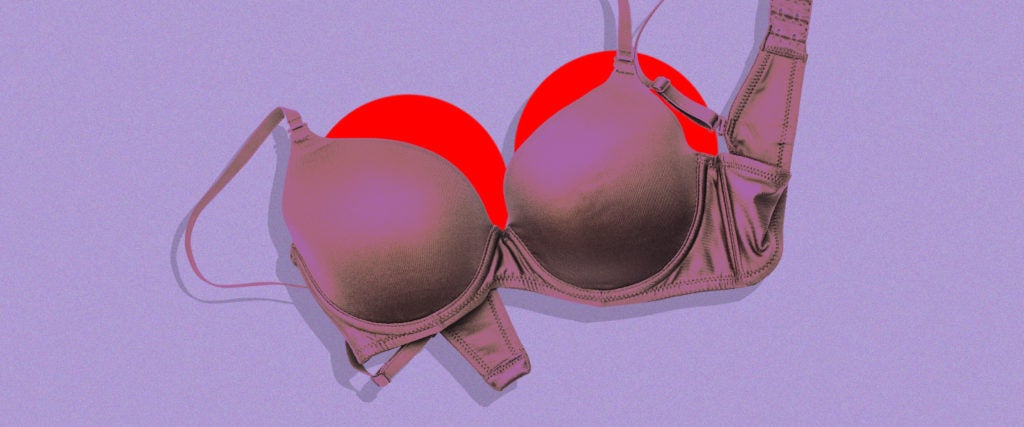Remember when, way back in 2016, both Gigi Hadid and Kylie Jenner generously revealed that their breasts are bigger while on their period and it left hordes of the internet side-eyeing their claims?
Oh, you don’t?
Well, let me remind you: Jenner had been pelted with boob-job accusations after recent Instagram photos seemed to show her working with a little more than usual. In a Twitter Q&A, she explained that it was all due to her time of the month, tweeting, “They will deflate soon. And it will be a sad sad day.”
They will deflate soon. And it will be a sad sad day https://t.co/R5Npv1GSv5
— Kylie Jenner (@KylieJenner) August 26, 2016
Although Jenner has been less than truthful about cosmetic procedures in the past — and I certainly haven’t kept a record of her boob growth — Hadid said a similar (and rather mournful) thing about her tit size in a video for Vogue: “My boobs are small right now. They get really big when it’s, like, that time of the month.”
Over the years, it seems this point still has yet to be cemented, so allow me to set the record straight: Period boobs are a thing, and they’re definitely different from regular boobs. For some, it can feel like a free, fun enhancement, but for others, it can feel like two tons of new, back-breaking weight. Period boobs look and feel different on everyone, and they can be real fickle, too — one week, they’re round and perky; the next, they’re softer, lopsided and a little lumpy.
anyone elses period tease u? like i have horrible cramps and my boobs get ginormous like a week before i even bleed
— tia (@rottenfwairy) October 28, 2020
“These changes aren’t a myth,” says Christine M. Derzko, a physician at St. Michael’s Hospital in Toronto and a professor of obstetrics and gynecology at the University of Toronto. “But what is a myth is that breasts swell during a period. In fact, it’s the exact opposite — your breasts become fuller and firmer as you’re getting closer and closer to a period. During a period, all the swelling goes down. And by the end, your breasts go back to normal and start all over again.”
It’s Mother Nature’s version of breast augmentation, a little process that comes down to two hormones: estrogen and progesterone. Estrogen is produced in the first half of the menstrual cycle from a growing ovarian follicle, leading to a growth in the size of a person’s breast ducts. As estrogen rises and that follicle bursts, ovulation begins and the body begins to make progesterone, which dominates the second half of the cycle. This is when the breast’s milk glands grow.
When this happens, a person’s tittays might feel sore or tender to the touch (the nipples might tingle, too). Breasts can even feel a bit bumpy as the glands grow.
All of this is happening, by the way, because the body is preparing for a potential pregnancy. If a person’s not about to formulate a spawn, their boobs will get the hint, give up and go back to their regular size and texture. But when the cycle starts again, so, too, does this teasing roller-coaster of breast size.
very rude my boobs look huge when I’m due my period then the other 3/4 of the month I go back to having two dots
— chantêl kavänagh (@kavanaghchantel) November 4, 2020
Of course, not everyone’s taking the same exact ride. As Angela Warburton, clinic director of the Toronto-based holistic health center Urban Wellness explains, changes in breast size and shape during menstruation is also related to a person’s emotional state, stress levels, sleep quality and diet. “Everything has an impact because our body is like an ecosystem; we’re not compartmentalized,” she says, explaining that genetics and age factor in as well. A 15-year-old on their period is going to feel the effects of this in a very different way than someone who’s 50, for example.
According to Johns Hopkins Medicine, when women (and anyone with a uterus) reach perimenopause — typically in their late 40s or early 50s — hormone levels drop. With less estrogen, which makes skin more elastic, breast tissue can shrink and become shapeless, skin will grow thinner and increasingly wrinkled and the notorious “sagginess” reveals itself. This means it’ll also be easier to feel lumps.
At the same time, too much breast growth or tenderness can indicate that something’s wrong. “Just because something is common doesn’t mean it’s normal,” says Warburton. “If someone’s getting really bad PMS or feeling really, really intense breast tenderness before their period, it’s usually a sign of the body being out of balance.”
A huge caffeine intake and a carb-heavy diet can, in particular, lead to a greater tenderness or more severe symptoms. Fibrocystic changes, which involve the breast filling with fluid, are also common causes of abnormal boob growth, as is inflammatory breast cancer. Likewise, if you have boobs and the swelling, ache or feelings of heaviness don’t go away after your period, or you find new lumps or experience nipple discharge, you’re gonna want to give your doctor a call. Something as simple as a shitty bra with little support can lead to painful swelling, too.
But, generally, if you’re filling out that dress a little more or feeling a smidge sore up top, it’s totally fine. And for some lucky ones, it’s even a true joy, no matter if you’re not exactly jumping from a B cup to a bodacious D.
After all, sometimes it’s just the little things.
I'm starting to enjoy my period boobs and hips…..one week out of the month I just miraculously become curvy…
— ? MRS. SLIMEBALL? (@kelsea_kelseaaa) October 28, 2020

